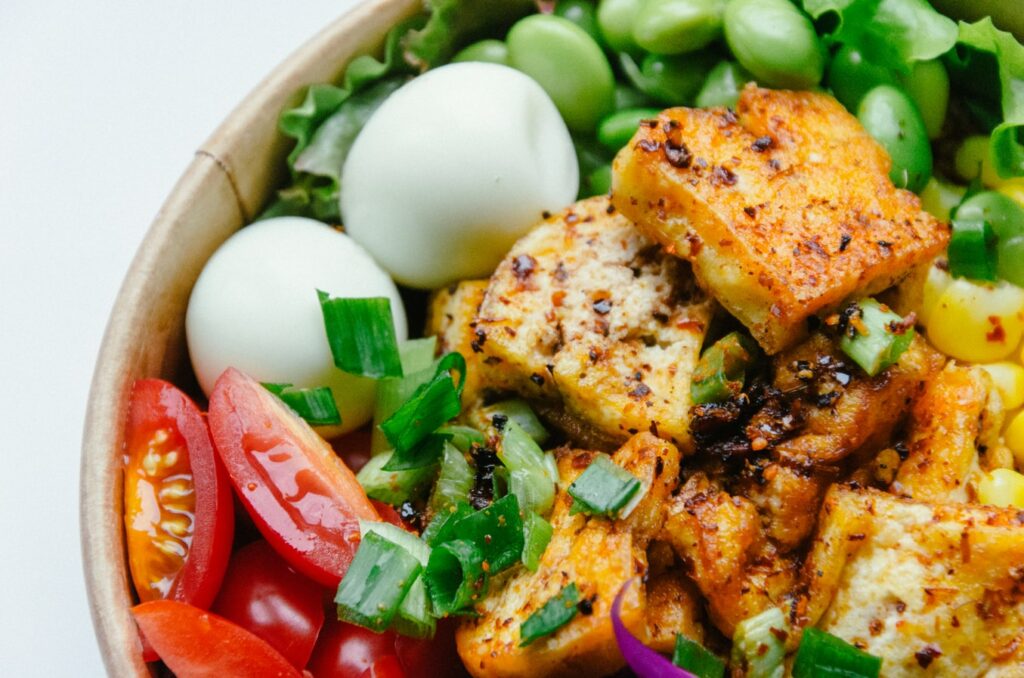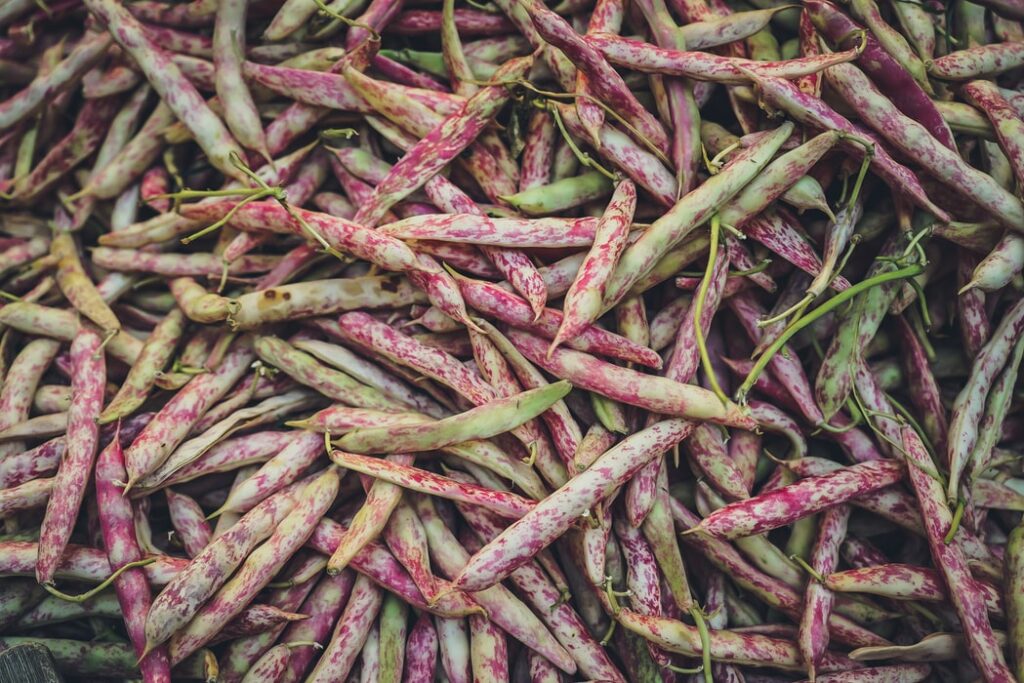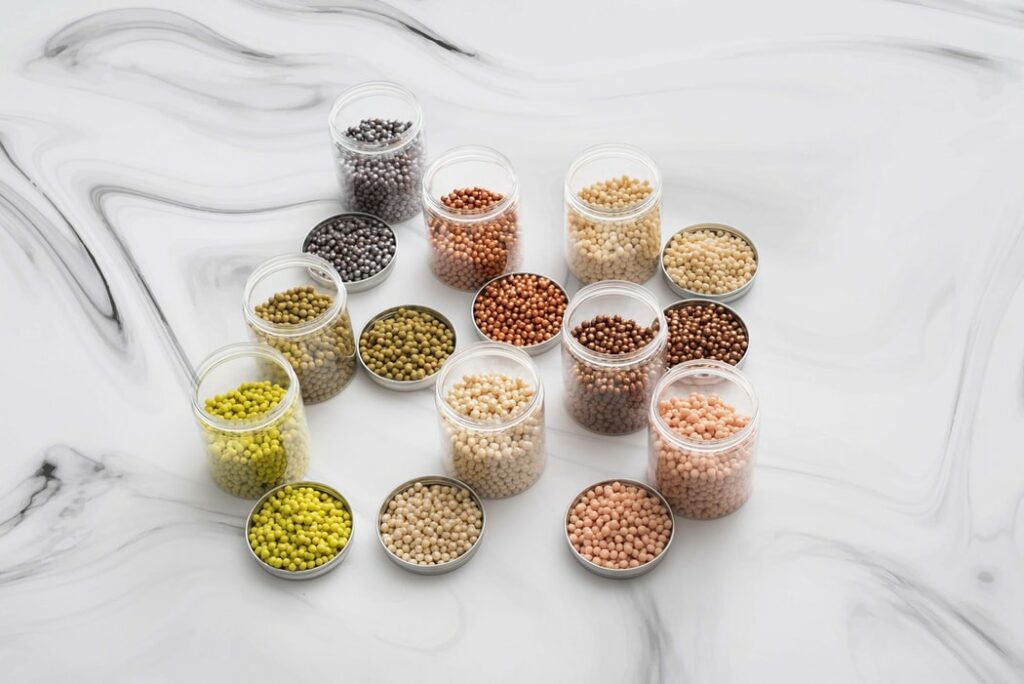Soy is a unique food that can have both estrogenic and anti-estrogenic effects on the body. Studies sometimes present unclear or conflicting evidence, but the evidence suggests that in healthy individuals, soy provides significant benefits, especially as an alternative to red meat.
Not soy fast
Soy has been consumed in Asian countries for thousands of years — there’s evidence that it has been consumed since 9,000 BC. In recent decades, soyfoods have also become increasingly popular in non-Asian countries, largely because they are versatile and rich in protein. Soy protein is better than many other sources of protein as it contains all the essential amino acids.
At the same time, soy is often shunned for fear that it interferes with hormones. While some small-scale studies have cast some doubt on soy’s beneficial properties, recent large-scale studies have helped us understand soy’s effects on the body much better.
There have been several large-scale studies on the health effects of soy. These results suggest that soy has either a beneficial or at worst, a neutral effect on various health conditions.
Soy is a nutrient-rich food that can be safely consumed multiple times a week and is likely to provide health benefits, especially when consumed as an alternative to red meat. While the extent of its benefit remains a matter of scientific debate, soy scaremongering has no scientific basis to stand on. Studies have shown that in moderate or even high quantities (an average of 1-2 servings per day), there is no relevant adverse effect in healthy individuals.

Is soy healthy?
The macronutrient composition of the soybean is different from other legumes, which is also why it’s so sought after. Soy is very rich in protein (comparable with meat in that regard but without the saturated fat and cholesterol). Soybean is also a good source of essential fatty acids and soy compounds that lower cholesterol levels. Studies have consistently found that reducing the animal protein and replacing it with plant protein from soy reduces cardiovascular risk, which is one of the main reasons for soy’s increasing popularity.
The soybean is also a good source of a variety of vitamins and minerals, such as potassium (which is notable because intake of this mineral is often suboptimal) and iron.
It’s hard to isolate the effects of soy from other parts of the diet, particularly as soy can be cooked and processed in multiple ways, and not all are similar.
“Soyfoods have long been recognized for their high-protein and low-saturated fat content, but over the past 20 years an impressive amount of soy-related research has evaluated the role of these foods in reducing chronic disease risk. Much of this research has been undertaken because the soybean is essentially a unique dietary source of isoflavones, a group of chemicals classified as phytoestrogens. The estrogen-like properties of isoflavones have also raised concern, however, that soyfoods might exert adverse effects in some individuals,” a recent study noted.
However, the concerns stem primarily from studies on animals, whereas human research supports the safety and benefits of soyfoods on healthy individuals.
Even in the most vulnerable categories, soy consumption seems safe. Approximately 20–25% of U.S. infants receive at least some soy-based formula (not soy milk) in their first year, and several studies documenting this have reported no negative health issues associated with this practice in babies or in adults who consumed soy-based formula as babies. Studies have found little to no differences between babies fed soy or cow’s-milk-based formula.
However, soy can be consumed in different forms, and some are not as healthy as others. Processed burgers generally tend to be far less healthy than things like tofu, for instance.
The bottom line on ‘is soy healthy’: Soy is an excellent source of nutrients, although processed forms may be far less healthy. The benefits of soy may depend on the form in which it is consumed.
Soy and female hormones

The effect of soy on women’s bodies has been often questioned. The reason is that soy contains phytoestrogens, plant hormones somewhat similar to estrogens. These are mainly two isoflavones (genistein and daidzein), and soy is far from the only plant to contain these hormones — studies have shown that a wide variety of fruits and nuts contain the same hormones. However, plant estrogens typically make a low percentage of the total ingested estrogens, especially in the Western world. Most of the estrogens we eat come from milk and dairy products; compared to that, soy only plays a minor part.
The controversy stems from the fact that the two isoflavones can act like estrogen (the female sex hormone) and estrogen plays a role in many biological processes from breast cancer to reproduction. However, these phytoestrogens have a much weaker effect than human estrogen — and while they share similarities to human hormones, they are structurally different. Furthermore, in some instances, phytoestrogens may even block the action of estrogen, which further complicates the issue.
Basically, while high levels of estrogen have been linked to an increased risk of breast cancer, soy foods don’t contain high enough levels of isoflavones to increase the risk of breast cancer.
“Soy has a relatively high concentration of certain hormones that are similar to human hormones and people got freaked out about that,” says Isaac Emery, a food sustainability consultant, for The Guardian. “But the reality is you would have to consume an impossibly large amount of soy milk and tofu for that to ever be a problem.”
| Unfermented soy foods | Isoflavone content (mg) | Protein (g) |
| soy milk, 1 cup | 6 | 7 |
| tofu (bean curd), soft, 3 ounces | 20 | 8 |
| soybeans, mature, boiled, ½ cup | 55 | 15 |
| soybeans, dry roasted, 1 oz. | 40 | 11 |
| edamame, boiled, ½ cup | 16 | 11 |
| soy cheese, 1oz. | 2 | 4 |
| soy burger, 1 patty | 5 | 14 |
| Fermented soy foods | Isoflavone content (mg) | Protein (g) |
| miso, 3 oz. | 37 | 10 |
| natto, 3 oz. | 70 | 14 |
| tempeh, cooked, 3 oz. | 30 | 13 |
| soy sauce, 1 tbsp | 0.02 | 0 |
Several studies have looked for this but failed to establish a connection — and furthermore, some studies suggest that soy might actually reduce the incidence of some types of cancer (though that evidence is still unclear).
High soya intake among women in Asian countries has been linked to a 30% lower risk of developing breast cancer compared to US women, who eat much less soya. For example, the average intake of isoflavones in Japan is 30-50 mg per day, compared to 3mg in Europe and the US.
At any rate, the best existing science at the moment suggests no reason to associate soy consumption with cancer risk. According to the American Cancer Society (ACS), while our understanding of estrogen is still improving, soy does not seem to pose any cancer risk.
Across the ocean, similar studies have come to similar conclusions. A recent review of the European Food Safety Authority found that isoflavones do not adversely affect the breast, thyroid, or uterus of postmenopausal women. No effect was found on endometrial thickness or the histopathology of the uterus after 30 months of supplementation with 150 mg/day of soy isoflavones.

Soy has also been sometimes regarded as a risk to the endometrial tissue. However, studies suggest otherwise. A review of 25 clinical studies found that isoflavones do not adversely affect the endometrium. Furthermore, a recent meta-analysis of 10 observational studies found that soy intake was inversely associated with endometrial cancer risk. Regarding endometriosis, studies have found either a neutral or a positive effect associated with soy milk.
It’s sometimes claimed that while soy is a healthy option for most women, it can be dangerous for women right before or during menopause. However, this has been disproven. A study in which women ingested 900 mg of soy isoflavones per day found “no significant changes in mean values for estrogenic effects or other laboratory measurements” — and 900 mg is essentially impossible to get through diet, no matter how much soy you eat.
In fact, some studies have found that soy isoflavones can help with menopause. Asian women who consume soy regularly have much lower rates of menopausal symptoms such as hot flashes, although the studies are contradictory and it’s still unclear if soy is responsible for this protective effect. The average blood concentration of the isoflavone genistein in Asian women is about 12 times higher than that of US because of higher soy consumption, although the possible benefits of soy remain uncertain.
Another study on obese postmenopausal women found that replacing at least some of the consumed animal protein with soy offers clears advantages in terms of regulating insulin and cholesterol.
However, very large quantities of soy consumption (more than 15 servings/week) might disrupt ovarian function, one study found.
“Although the levels of phytoestrogens typically found in soy foods pose minimal risk in the adult female, the female reproductive system is dependent on hormones for proper function and phytoestrogens at very high levels can interfere with this process.”
The bottom line on soy and female hormones: studies have found no reason for concern unless soy is consumed in extremely large quantities. Soy is linked to positive outcomes for women, though the extent of these effects is still being researched.
Soy and male hormones
The idea that soy is not good for men, that it will alter their hormone levels or make them grow “man boobs” is owed to advertising more than real science. The alleged evidence for this comes from two isolated case reports of elder Japanese men whose caloric intake came almost exclusively from soy. Yes, if all you eat is soy, you’re bound to have health problems — but that can be said for everything, if you just eat one food, you’re bound to get in trouble. A thorough review found that “that isoflavones do not exert feminizing effects on men at intake levels equal to and even considerably higher than are typical for Asian males.”
Concerns that the consumption of phytoestrogens might exert adverse effects on men’s fertility (such as lowered testosterone levels and semen quality) have been addressed in several studies.

The controversy was fueled by one highly circulated 2008 study quoted by the Daily Mail which found that in men with a low sperm count, soy was associated with an even lower sperm count (though not leading to infertility). However, the study had important limitations: it’s limited to only 99 men, the majority of participants 72%) were overweight or obese, and other dietary and lifestyle parameters were not factored in (for instance, red meat or junk food are also suspected of reducing sperm count, as is a sedentary lifestyle).
The study was contradicted by more recent research that found no such association. As it so often happens, this small study was misinterpreted as “soy kills your sperm,” although evidence suggesting otherwise is much more robust. Asian populations have regularly consumed soy for generations without exhibiting any fertility disorders and primate studies also found no connection between soy and the quality, quantity, or motility of sperm.
In one University of Minnesota study from 2009, fifteen placebo-controlled treatment groups were compared with a baseline. In addition, 32 reports involving 36 treatment groups were assessed in simpler models to ascertain the results.
The researchers found no indication of a hormone alteration, regardless of the type of soy that was consumed.
“No significant effects of soy protein or isoflavone intake on testosterone, sex hormone-binding globulin, free testosterone, or free androgen index were detected regardless of the statistical model,” the researchers wrote. “The results of this meta-analysis suggest that neither soy foods nor isoflavone supplements alter measures of bioavailable testosterone concentrations in men.
In a 2010 review of the medical evidence, researchers wrote that “isoflavones do not exert feminizing effects on men,” while a study on babies who were fed soy milk found no “estrogen-like” hormonal effects in the soy drinkers.
Another interesting study on patients with prostate cancer assessed how much phytoestrogens would need to be ingested to alter testosterone and estrogen levels in men — it would be almost impossible to consume that much. No effects on estrogen levels have been noted in numerous clinical studies in which men were exposed to as much as 150 mg/day isoflavones (which is already a huge quantity). Even when a study analyzed a dose of 450 – 900 mg of phytoestrogens per day for 3 months, it found only a small detectable change in testosterone levels and no feminizing effects.
“The intervention data indicate that isoflavones do not exert feminizing effects on men at intake levels equal to and even considerably higher than are typical for Asian males,” the study concluded.
To put that into perspective, 450 mg of phytoestrogen is a huge amount. The average consumption of isoflavones in Asian society is 15-50 mg per day, while in Western countries only about 2 mg per day. You could have yourself a soy feast every day and you still wouldn’t reach it:
- 1 cup of cooked soybeans = 94 mg
- 6 ounces of tempeh = 74 mg
- 2 cups of soy milk = 60 mg
- 6 ounces of tofu = 40 mg
- 2 soy hot dogs = 22 mg
- 4 oz of soy cheese = 8 mg
- total = 298
Overall, the impact of soy on male hormones is nonexistent or negligible and it is strongly overshadowed by the positive nutritional advantages of soy compared to equivalent foods.
“These data do not support concerns about effects on reproductive hormones and semen quality,” one review concluded.
If you’re worried about your hormone levels and feminization, you’d be better off reducing the amount of alcohol you consume. Alcohol has been repeatedly linked to hormone disorders, and ethanol is essentially a testicular toxin known to disrupt testosterone and reduce fertility.
The bottom line on soy and male hormones: The weight of evidence suggests no association between soy and feminization or hormonal issues. If your calories don’t come exclusively from soy, you should be alright.
Soy and cardiovascular disease

Soy has been found to reduce the incidence of cardiovascular diseases, although it’s still debatable to what extent this effect is owed to the soy itself or to the fact that soy is often replacing more harmful foods like red meat.
The first major study to support this was a 1995 meta-analysis of 38 controlled clinical trials, which found that eating 50 grams of soy protein per day (over a pound of tofu) reduces cholesterol by 12.9%. Other studies have found a similar but weaker effect, and the problems stem from how soy is consumed — not all soy foods are alike, and some processed foods may be less healthy than others.
Overall, however, soy has been linked to a lower risk of heart disease compared to protein from animal sources. Even though soy protein may have little or even no direct effect on cholesterol or artery health, it is generally good for the heart and blood vessels if it replaces less healthful choices like red meat, especially as it comes with plenty of vitamins, minerals, and is low in saturated fats.
It’s also noteworthy that cardiovascular protection was observed in women more than men. But, for both men and women, the discussion is about how and how much soy helps cardiovascular health, not about problems associated with consumption.
The bottom line on soy and cardiovascular health: some studies have reported positive effects associated with soy consumption. While the extent of that is being actively researched, soy is a healthier alternative to red meat.
Soy and cancer
In animal and cell studies, high dosages of isoflavones tend to stimulate cancer growth. But in real humans, it’s a completely different thing, and most studies suggest a protective effect rather than the opposite.
For instance, the Shanghai Women’s Health Study (the largest and most detailed study of soy and breast cancer risk) followed 73,223 Chinese women for over 7 years. It found that women who ate the most soy had a 59% lower risk of premenopausal breast cancer compared to those who ate the lowest amount of soy. The Breast Cancer Family Registry, another prospective study following 6,235 women diagnosed with breast cancer in the US and Canada found higher survival rates in women who consumed more soya.
Another concern links soy and the risk of prostate cancer — however, here too, the studies suggest the opposite: regular soya intake is associated with an almost 30% reduction in the risk of developing prostate cancer (though again, this is difficult to attribute directly to soya, it could be linked to the lower intake of red meat or more general lifestyle). The strongest evidence here comes from a meta-analysis of 30 case-control and cohort studies from the US, Europe, Japan, and China, which found that phytoestrogen is significantly associated with a reduced risk of prostate cancer.
Curiously, it’s not clear how this happens. Soya intake doesn’t affect testosterone levels in men, so it could simply be that a diet containing more soya is often healthier overall (although isoflavones have been found to inhibit metastasis).
The bottom line on soy and cancer: soy is associated with a reduction in the risk of breast and prostate cancer.

The Conclusions
It’s always challenging to study the health impacts of a particular food or ingredient. There have been hundreds of studies on the health impacts of soy, some bigger and more thorough, some a bit more shallow, all with their own limitations. Studies often show correlation without causation, but the weight of evidence strongly indicates health benefits from eating soya — even if it just replaces unhealthier foods.
The phytoestrogens in soy play a complex role in the human body and the mechanism, but most studies find neutral or positive effects. However, in some niche situations, specialy attention must be paid to soy (for instance soy may interfere with thyroid hormone medication). Evidence indicates soyfoods can be safely consumed by all individuals except those who are allergic to soy protein, which is a rare allergy.
Aside from the phytoestrogens, soy contains plenty of vitamins, minerals, and nutrients. Soy can also be prepared in different types of foods — and some are healthier than others.
As is always the case, soy is best consumed in a balanced diet. Any food consumed in extremes will likely lead to negative health outcomes.


